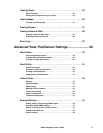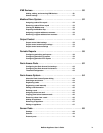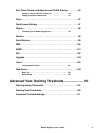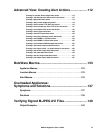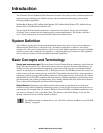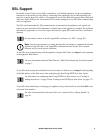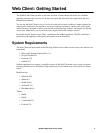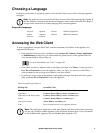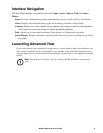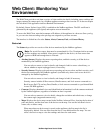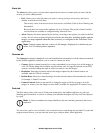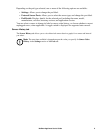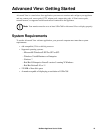
3NetBotz Appliance User’s Guide
SSL Support
By default, Secure Sockets Layer (SSL) is enabled on your NetBotz appliance. All browser/appliance
interaction can be carried out using SSL by connecting to the appliance using a URL beginning with
https (for example, https://IP_address). Your appliance can also use SSL when posting alert notification
and sensor data to Web servers, and Advanced View can be configured to use SSL when communicating
with your appliance.
The SSL certificate needed for SSL communications is generated by the appliance (self-signed) and
requires no user interaction. If the hostname or domain name of the appliance is changed, the certificate
automatically regenerates. You can also request and install a signed SSL certificate from a certification
authority.
For information on how to install a signed SSL certificate, see “SSL” on page 102.
Note: Your browser generates a warning the first time you attempt to communicate with the
appliance using SSL after a self-signed SSL certificate has been created. This is normal
behavior and you can accept the certificate.
To use SSL when communicating with the appliance using the Web Client, use https:// at the beginning
of the appliance Web address.
For more information about the Web Client see “Web Client: Monitoring Your Environment”
on page 7.
To use SSL when posting alert notifications and sensor data to a Web server, use https:// at the beginning
of the Web address of the Web server when configuring the Send Using HTTP Post Alert Action.
For information on configuring Send Using HTTP Post Alert Actions, see “Creating or
editing alert actions” on page 32 and “Creating a send HTTP post alert action” on page 122.
To use SSL when monitoring or managing your appliance using Advanced View, select Use SSL in the
Advanced View interface.
For more information about Advanced View, see “Advanced View: Getting Started” on
page 10.



